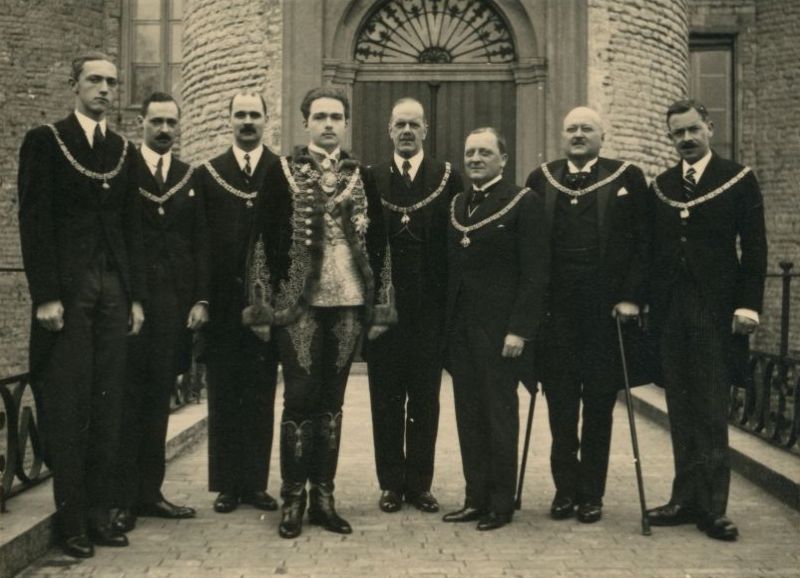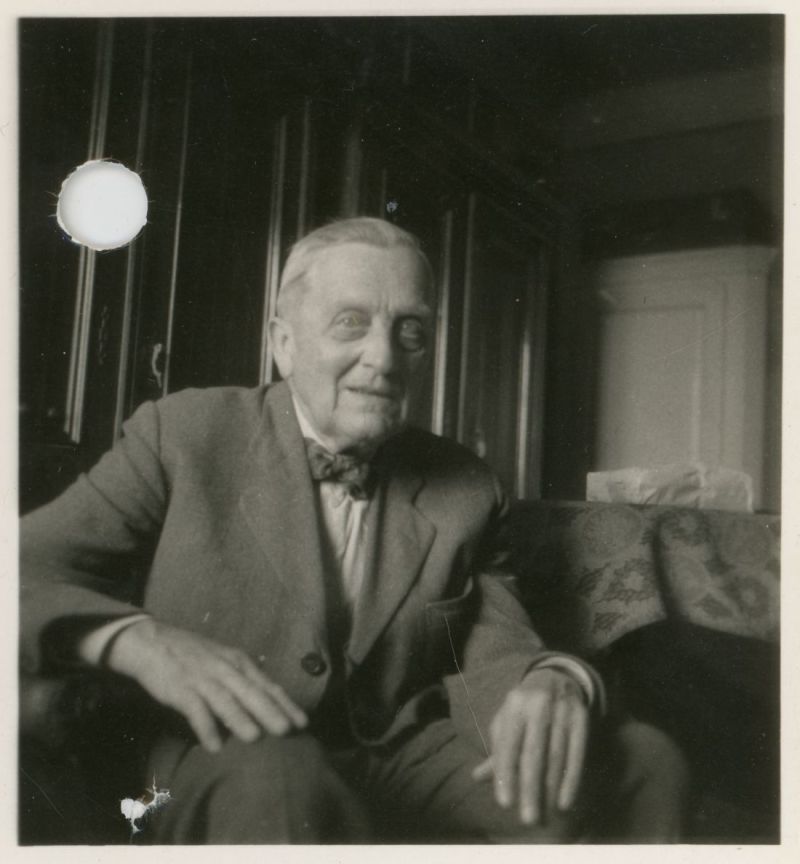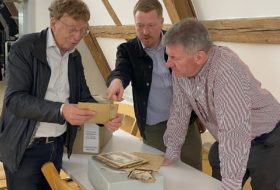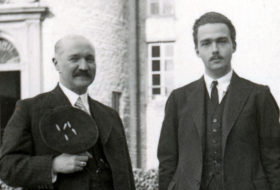Investiture of members of the Order of the Golden Fleece, Steenokkerzeel, Belgium (1932)
(from left to right) Archduke Robert von Habsburg-Estei, Archduke Gottfried, Prince Maximilian Hohenberg,
Otto von Habsburg, Baron Erwein Gudenus, Count József Cziráky, Count József Károlyi, Count Heinrich Degenfeld
Following the suppression of the Hungarian Revolution of 1956, a large number of Hungarians forced into exile contacted the last heir to the Hungarian throne. In addition to analyses and presentations of international and Hungarian political conditions, Otto von Habsburg also received a number of well-documented personal stories. The letters written to him tell the life stories of the unknown victims of the dictatorship, as well as those of old legitimists, of people who have always been loyal to the king and the kingdom.
Of the latter, Count József Cziráky stands out, whose life after 1945 Otto von Habsburg must have learned about from the accounts of aristocrats forced into emigration. Our collection preserves a portrait made in secret in 1957, smuggled across the border and finally delivered to its addressee overseas, as well as a letter written by József Cziráky to his wife Ilona Andrássy in May 1962 – by then sent from the free side of the Iron Curtain. The fate of these few documents demonstrates the faith in legitimacy, the remaining links and, not least, the unbroken trust in the heir to the throne.
József Cziráky (1883–1960) was one of the most prominent royalist politicians in the decades between the two world wars. He proved his loyalty on many occasions, for example, in 1921, when the plane of Charles IV landed on the estate of Cziráky in Dénesfa, during the King’s second attempt to return to the throne. He was a member of the inner circle of the emigrated royal family, occasionally acting as secretary to the widow and her children in Lequitio, Spain, and was also the trustee of the royal family’s remaining properties in Hungary.
After the Second World War, his estates were nationalised, and he lived with his family in the remaining rooms of his castle in Dénesfa. Afterwards, he rented an apartment in Sopron, and later returned to the village to live in the back of a farmhouse. Cziráky spent a secluded life in Dénesfa, with very few visitors until 1956.
Count József Cziráky
Szombathely (6 June 1957)
The photograph sent to Otto von Habsburg was taken on 6 June 1957 in Szombathely. The photo was taken by Count Ferenc Erdődy in the room of parish priest Alajos Szokoly. The reason for their meeting is not known, but in any case, the fact that the three of them were present was not without risk during the repression that followed the 1956 revolution. Szokoly was imprisoned in 1948 for his opposition to the nationalisation of parochial schools, while the other two were considered suspicious and even enemies in the eyes of the communist authorities because of their aristocratic background.
It is not known how the portrait by Erdődy crossed the border, as it only reappeared on 30 January 1959. On this day, Count István Révay (Szokoly’s brother-in-law), who had emigrated in 1949, enclosed it in an envelope with a letter he had written to Otto von Habsburg in New York. With the help of Otto’s younger brother, Archduke Carl Ludwig, the photo was finally delivered to the addressee, who praised the old Count’s patriotism and loyalty in his reply.
József Cziráky died a year and a half later, on 10 August 1960 in Dénesfa. His last days are documented in another letter to Otto von Habsburg. This was written by his widow, Ilona Andrássy, by the time from the free world, from Kohfidisch (Gyepűfüzes), less than ten kilometres from the Hungarian border. The letter of 25 May 1962 is significant both for its description of Count Cziráky’s loyalty to the King until his death and for the fate of the collar of the Order of the Golden Fleece. When Otto von Habsburg came of age, he gained the right to decide on the investiture of new members. Thus, in 1932, József Cziráky – the fifth in his family – became a member of the Order as well. After 1945, the establishment of a communist dictatorship and the emigration of his sons meant that the safety of the collar had to be taken care of. On his deathbed, the Count left it to his widow to deliver it to the heir to the throne.
Ilona Andrássy was granted a passport about a year and a half after her husband’s death, and left Hungary. While crossing the border, she managed to smuggle out the collar of the Order of the Golden Fleece in her pocket, which she handed over to the confidential royal envoys of Otto von Habsburg in Vienna. In these same days, Ilona Andrássy left Vienna for Canada, where she died seven years after her husband, in 1967.
The supposedly last photograph of József Cziráky was discovered after more than sixty years among the documents of Otto von Habsburg, which are currently being arranged by our Foundation.
István Gergely Szűts



